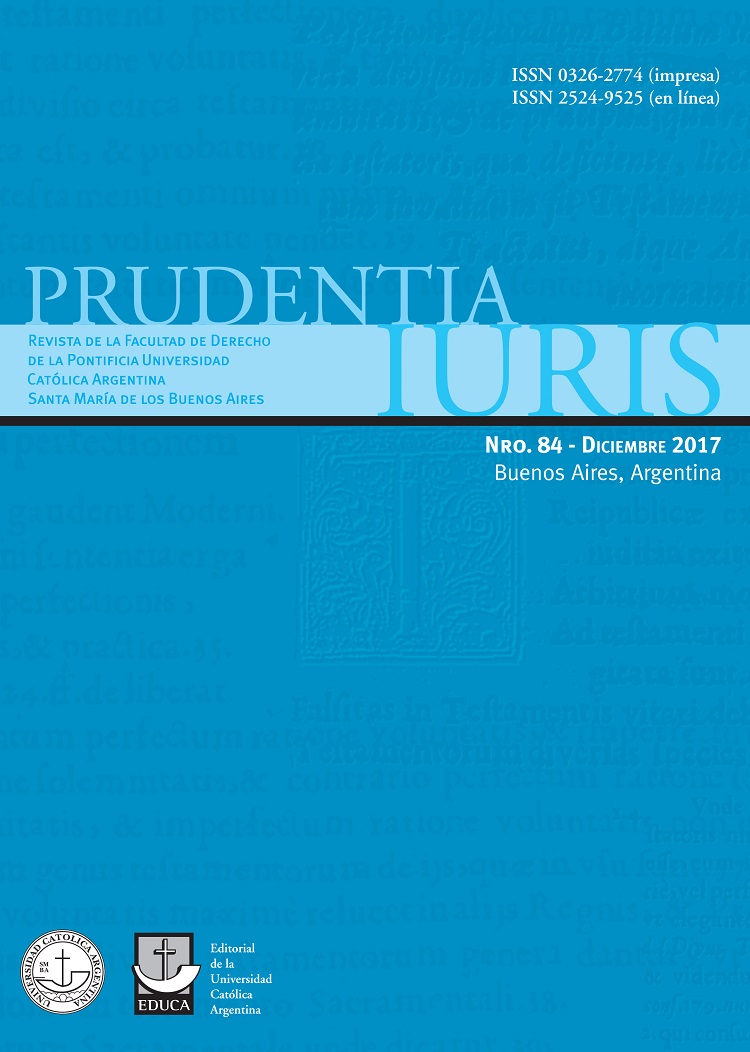Others manifestations of prosecutorial discretion
Keywords:
Prosecutorial discretion, Arbitrariness, Common GoodAbstract
This complete work was developed in the prequel published in Prudentia Iuris, where it was tried to discern if some novel figures were manifestations of the denominated principle of prosecutorial discretion; and tried to specify if they fit the common good. Overcome that rung of the investigative plot; and in the key with the commitment assumed to deepen the investigation initiated, the culmination of this article is to order the movement of the reason to scrutinize if the mediation, conciliation and repair; incurable disease in terminal condition and/or advanced age; the repentant; together with other institutes, are concretions of the so-called principle of prosecutorial discretion. As in the previous investigation, when we scrutinize the first question, we will put all means to determine if these are ordered means at the end of the political society. So, once again, we will pass the sieve by positive ordering, and contemporary doctrine, in addition to necessarily appeal to the perennial magisterium of classical thought (at whose summit is the work of St. Thomas Aquinas); As well as the fruitful contributions provided from realism to Criminal Law, especially through doctrinaires of the likes of Alfredo Repetto, Camilo Tale and Héctor Hernández. In this way, we intend to study this topic of special relevance, in the light of the fundamental principles of justice and natural order, always enlightened by the Faith.Downloads
Download data is not yet available.
Downloads
Published
20-12-2017
How to Cite
Romero Berdullas, C. M. (2017). Others manifestations of prosecutorial discretion. Prudentia Iuris, (84), 137–164. Retrieved from https://e-revistas.uca.edu.ar/index.php/PRUDENTIA/article/view/958
Issue
Section
Parte II. Estudios Doctrinales
License











 e-ISSN 2524-9525 | ISSN 0326-2774
e-ISSN 2524-9525 | ISSN 0326-2774